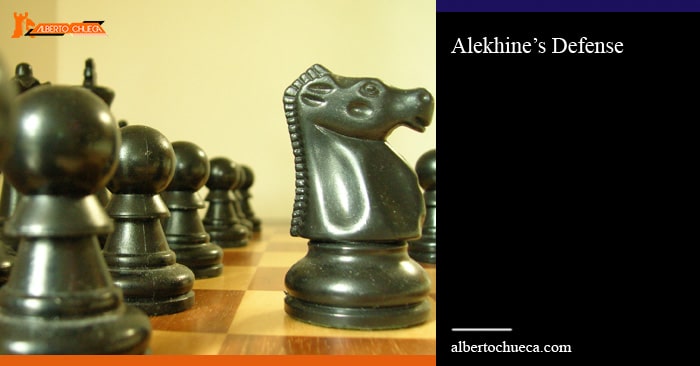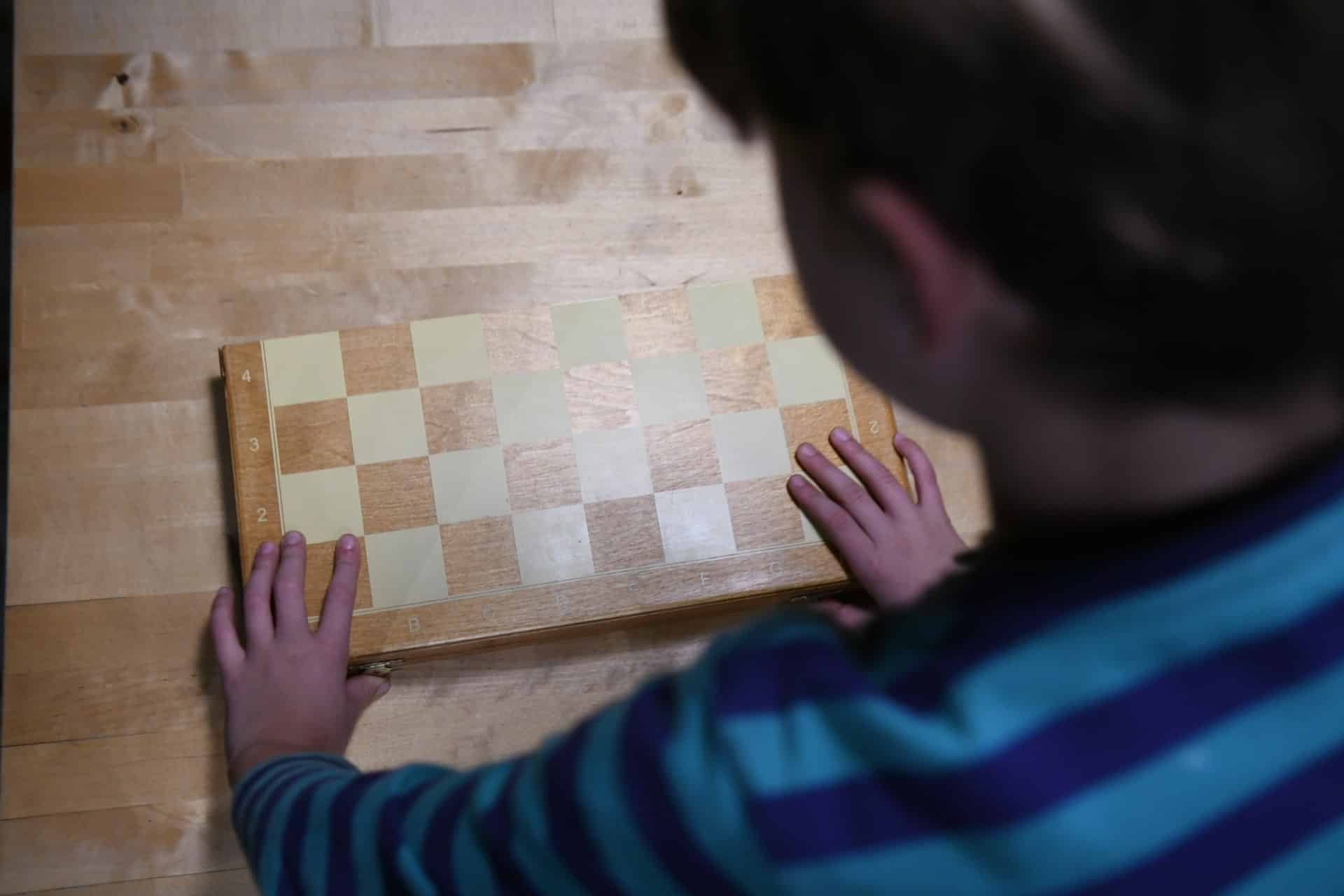Alekhine's Defense
Alekhine's Defense is a sharp Chess Opening, named after the World Champion Alexander Alekhine, who played it for the first time at Budapest 1921. It is considered a good variation for aggressive attack players. One of the main characteristics of Alekhine’s Defense is that it breaks the symmetry since move number 1, leading to unbalanced and dynamic positions.
We have Alekhine's Defense on the board after the moves
1.e4 Nf6
The idea with this move Nf6 is to attack the central pawn, so, White is tempted now to advance it threatening the Knight. Also, the “c”, “d” and maybe even “f” white pawns will advance very often in the next moves, to occupy the center. The first player will control the central squares, but at the same time, the pawns will be too advanced, so, they are somewhat exposed.
So, Alekhine's Defense is considered a hypermodern opening, which means Black lets White get the center, but then attacks it very strongly and takes advantage of the weaknesses created by the advance of these pawns.
Some theory and ideas in Alekhine's Defense
The mainline for White in this position, with a difference, is 2.e5. Another option is 2.Nc3, but this line usually transposes to other openings like Vienna Game or Four Knights once Black plays 2 … e5.
2.e5 Nd5
The Knight could also go to g8 or e4, but Black is not getting good positions in these lines (the Knight on g8 is undeveloped and on e4 is too exposed).
Now White has three main options:
a) 3.c4 Nb6 4.c5 Nd5 Two Pawns Attack (also known as Lasker Attack or Chase Variation)
In this line of Alekhine's Defense, White is getting even more tempos and space in the center attacking the Knight, however, they are weakening the essential square d5, so Black Knight can take advantage of this and go there. In general, the positions are unclear but balanced.
b) 3.Nc3 Two Knights Variation
This time White is accepting doubled pawns on the Queenside for development advantage.
3… Nxc3 4.dxc3
Actually taking with “b” is also making sense (bxc3), bringing pawns to the center. White does not get too much in this line though.
4 … d6 5.Nf3 Nc6 White is very slightly better
Careful with this trick
However, in this line, instead of 5.Nf3, the first player can also try this tricky development move
5.Bc4!?
Hoping the Blunder 5 … dxe5?? 6.Bxf7+ Kxf7 7.Qxd8 White wins
But of course, Black does not have to fall for that, they can just play 5 … e6! and get a very playable middlegame.
c) 3.d4
This is the most common and popular move for White in this position
3 … d6
Black immediately starts fighting against the center and developing. Again, White can choose one of the next three options:
C1) 4.Bc4 Nb6 Balogh Variation
This is playable, but it does not seem to be particularly strong for White.
C2) 4.c4 Nb6 and here:
C21) 5.exd6 Exchange Variation
This line is not too ambitious; however White keeps some space advantage and probably a slightly better middlegame. Now, Black can either capture with “e” or “c”. They are both fine, usually, exd6 leads to more positional play and cxd6 is probably a little sharper.
C22) 5.f4 Four Pawns Attack
This is more aggressive. The first player has even more space but the pawns are more advanced too, which is not completely good. This line continues:
5 … dxe5 6.fxe5 Nc6 7.Be3 Bf5 8.Nc3 e6
One more time the first player has a short advantage, but they can lose it or stay in a bad position with only one wrong step.
C3) 4.Nf3 Modern Variation
This is mainline in this position. It continues:
4 … Bg4
4 … dxe5 is also a very interesting option for Black
5.Be2 e6 6.0-0 Be7 and as it is common in Alekhine’s Defense, White is slightly better.
Typical Pawn Structure in Alekhine's Defense
It is really hard to talk about one typical pawn structure since White can play too many different schemes and all of them can lead to different pawns set-ups. However, since Black almost always plays d6, and very often there is a trade on e5 (dxe5, for example, Modern Variation with 4 … dxe5), it could help to take a look at the resulting structure:
White: a2 b2 c4 d4 f2 g2 h2
Black: a7 b7 c6 e6 f7 g7 h7
In this structure White clearly has more space and control in the center. The Pawn on d4 is not protected by another pawn, which means after some attack it will have to be protected by pieces, which could be a problem for White at some point.
Usually, the first player could want to take advantage of the better center and start some kind of attack on the Kingside. Black could also try typical breaks over e5 or c5, to undermine White’s center. “d” file is half-open for Black as “e” is half-open for White. There is an interesting square for White on e5.
Typical Plans in Alekhine's Defense
Again, it is not easy to talk about some specific typical plans; however, we can say Black is always targeting White’s Center, and very often breaking with pawns over c5 or other points, like b6 or f6, depending on the position and the structure. As White has more space, Black should avoid passive positions and try to get the initiative and stay with it, or else the first player could start some decisive attack.
Typical squares for Black pieces in Alekhine's Defense
King: Almost always castles Kingside
Rooks: Very often the “e”, “d”, or “c” files are open or half-open, so in general black Rooks should go there and help with the pressure in the center.
Bishops: The dark squares Bishop can be developed over e7; however, as usually there is a pawn on d6, it can be a little passive. So, sometimes Black can try to develop it over the fianchetto. The light squares Bishop is usually traded for the Knight on f3 since this is an important defender of White’s Center.
Knights: The Kingside Knight will invite white pawns to advance since the first move. Usually, this Knight will be safe on b6 or sometimes d5.






